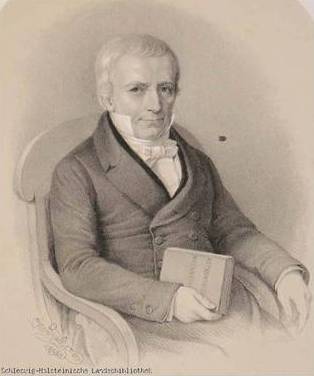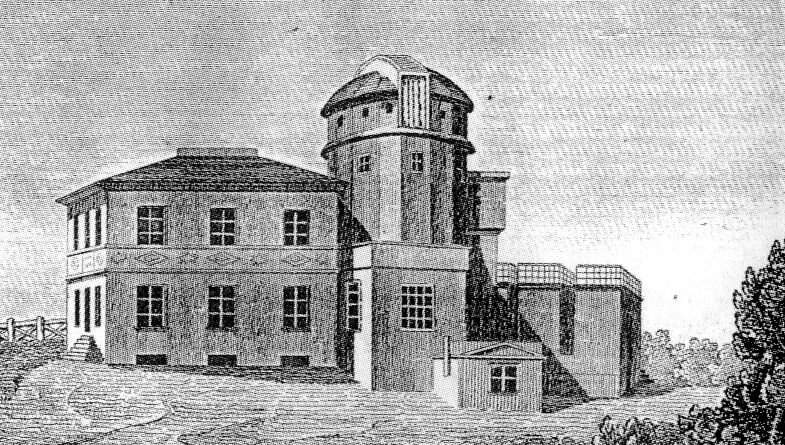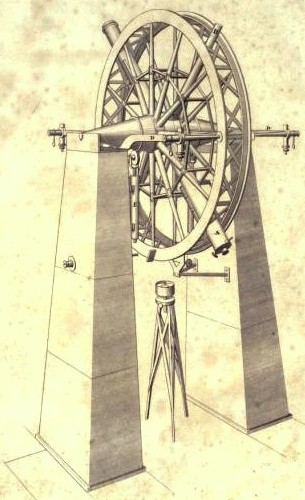|
Altona Observatory
The Altona Observatory () was an astronomical observatory situated in the Palmaille, in Altona, Hamburg. The observatory was founded by Heinrich Christian Schumacher in 1823 and continued to operate until 1871, 21 years after his death. It closed due to funding being cut off following the cession of the 'Elbe Duchies' of Schleswig, Holstein, and Saxe-Lauenburg by Denmark to Austria and Prussia following the Second Schleswig War. The ''Astronomische Nachrichten'' journal was founded at the observatory by Schumacher, and was edited there until the observatory's closure. History Foundation In 1815 Heinrich Christian Schumacher initiated a large-scale geodetic survey of Jutland, stretching from Skagen to Lauenberg. To connect the Danish measurements with the greater European geodetic network, Schumacher involved Carl Friedrich Gauss, who in 1818 began his own survey of the Kingdom of Hanover. To connect both networks, a fundamental station was needed in Altona. In 1821 Sch ... [...More Info...] [...Related Items...] OR: [Wikipedia] [Google] [Baidu] |
Heinrich Christian Schumacher
Prof Heinrich Christian Schumacher FRS(For) FRSE (3 September 1780 – 28 December 1850) was a German- Danish astronomer and mathematician. Biography Schumacher was born at Bramstedt, in Holstein, near the German/Danish border. He was educated at Altona Gymnasium on the outskirts of Hamburg. He studied in Germany at Kiel, Jena, and Göttingen Universities as well as Copenhagen. He received a doctorate from Dorpat University in Russian Empire in 1807. From 1808, he was adjunct professor of astronomy in Copenhagen. He directed the Mannheim observatory from 1813 to 1815, and then in 1815 was appointed Professor of Astronomy in Copenhagen and Director of the Observatory. From 1817 he directed the triangulation of Holstein, to which a few years later was added a complete geodetic survey of Denmark (finished after his death). For the sake of the survey, Schumacher established the Altona Observatory at Altona, and resided there permanently. He was elected a Foreign Fellow of ... [...More Info...] [...Related Items...] OR: [Wikipedia] [Google] [Baidu] |
Kingdom Of Hanover
The Kingdom of Hanover (german: Königreich Hannover) was established in October 1814 by the Congress of Vienna, with the restoration of George III to his Hanoverian territories after the Napoleonic era. It succeeded the former Electorate of Hanover (known formally as the Electorate of Brunswick-Lüneburg), and joined 38 other sovereign states in the German Confederation in June 1815. The kingdom was ruled by the House of Hanover, a cadet branch of the House of Welf, in personal union with the United Kingdom of Great Britain and Ireland since 1714. Since its monarch resided in London, a viceroy, usually a younger member of the British Royal Family, handled the administration of the Kingdom of Hanover. The personal union with the United Kingdom ended in 1837 upon the accession of Queen Victoria because semi-Salic law prevented females from inheriting the Hanoverian throne while a dynastic male was still alive. Her uncle Ernest Augustus thus became the ruler of Hanover. ... [...More Info...] [...Related Items...] OR: [Wikipedia] [Google] [Baidu] |
Kiel
Kiel () is the capital and most populous city in the northern German state of Schleswig-Holstein, with a population of 246,243 (2021). Kiel lies approximately north of Hamburg. Due to its geographic location in the southeast of the Jutland peninsula on the southwestern shore of the Baltic Sea, Kiel has become one of Germany's major maritime centres, known for a variety of international sailing events, including the annual Kiel Week, which is the biggest sailing event in the world. Kiel is also known for the Kiel Mutiny, when sailors refused to board their vessels in protest against Germany's further participation in World War I, resulting in the abdication of the Kaiser and the formation of the Weimar Republic. The Olympic sailing competitions of the 1936 and the 1972 Summer Olympics were held in the Bay of Kiel. Kiel has also been one of the traditional homes of the German Navy's Baltic fleet, and continues to be a major high-tech shipbuilding centre. Located in Kiel is the ... [...More Info...] [...Related Items...] OR: [Wikipedia] [Google] [Baidu] |
Altona-Kiel Railway Company
The Altona-Kiel Railway Company (german: Altona-Kieler Eisenbahn-Gesellschaft, AKE) was a joint-stock company, established under the law of Denmark in personal union with the Duchy of Holstein, that built and operated an 105 km railway line between Altona and the Baltic Sea port city of Kiel. Altona was at that time the second largest city under Danish rule and the railway line was the first built in Danish-controlled territory. Formation Background The company was founded in December 1840 on the initiative of merchants from Altona and Kiel. Among the initiators in Kiel were Georg Hanssen and Johann Christian Kruse. The participants sought to improve the transport of their goods to markets by connecting the North and Baltic Seas and they agreed to promote this objective as members of the Altona-Kiel railway committee. In 1833, the economist Friedrich List had proposed a network of railways in Germany, including a rail link between the Hanseatic cities of Hamburg and Lübe ... [...More Info...] [...Related Items...] OR: [Wikipedia] [Google] [Baidu] |
William Herschel
Frederick William Herschel (; german: Friedrich Wilhelm Herschel; 15 November 1738 – 25 August 1822) was a German-born British astronomer and composer. He frequently collaborated with his younger sister and fellow astronomer Caroline Herschel (1750–1848). Born in the Electorate of Hanover, William Herschel followed his father into the military band of Hanover, before emigrating to Great Britain in 1757 at the age of nineteen. Herschel constructed his first large telescope in 1774, after which he spent nine years carrying out sky surveys to investigate double stars. Herschel published catalogues of nebulae in 1802 (2,500 objects) and in 1820 (5,000 objects). The resolving power of the Herschel telescopes revealed that many objects called nebulae in the Messier catalogue were actually clusters of stars. On 13 March 1781 while making observations he made note of a new object in the constellation of Gemini. This would, after several weeks of verification and consulta ... [...More Info...] [...Related Items...] OR: [Wikipedia] [Google] [Baidu] |
Friedrich Bessel
Friedrich Wilhelm Bessel (; 22 July 1784 – 17 March 1846) was a German astronomer, mathematician, physicist, and geodesist. He was the first astronomer who determined reliable values for the distance from the sun to another star by the method of parallax. A special type of mathematical functions were named Bessel functions after Bessel's death, though they had originally been discovered by Daniel Bernoulli and then generalised by Bessel. Life and family Bessel was born in Minden, Westphalia, then capital of the Prussian administrative region Minden-Ravensberg, as second son of a civil servant into a large family. At the age of 14 Bessel was apprenticed to the import-export concern Kulenkamp at Bremen. The business's reliance on cargo ships led him to turn his mathematical skills to problems in navigation. This in turn led to an interest in astronomy as a way of determining longitude. Bessel came to the attention of a major figure of German astronomy at the time, ... [...More Info...] [...Related Items...] OR: [Wikipedia] [Google] [Baidu] |
Astronomy
Astronomy () is a natural science that studies astronomical object, celestial objects and phenomena. It uses mathematics, physics, and chemistry in order to explain their origin and chronology of the Universe, evolution. Objects of interest include planets, natural satellite, moons, stars, nebulae, galaxy, galaxies, and comets. Relevant phenomena include supernova explosions, gamma ray bursts, quasars, blazars, pulsars, and cosmic microwave background radiation. More generally, astronomy studies everything that originates beyond atmosphere of Earth, Earth's atmosphere. Cosmology is a branch of astronomy that studies the universe as a whole. Astronomy is one of the oldest natural sciences. The early civilizations in recorded history made methodical observations of the night sky. These include the Babylonian astronomy, Babylonians, Greek astronomy, Greeks, Indian astronomy, Indians, Egyptian astronomy, Egyptians, Chinese astronomy, Chinese, Maya civilization, Maya, and many anc ... [...More Info...] [...Related Items...] OR: [Wikipedia] [Google] [Baidu] |
Scientific Journal
In academic publishing, a scientific journal is a periodical publication intended to further the progress of science, usually by reporting new research. Content Articles in scientific journals are mostly written by active scientists such as students, researchers, and professors instead of professional journalists. There are thousands of scientific journals in publication, and many more have been published at various points in the past (see list of scientific journals). Most journals are highly specialized, although some of the oldest journals such as '' Nature'' publish articles and scientific papers across a wide range of scientific fields. Scientific journals contain articles that have been peer reviewed, in an attempt to ensure that articles meet the journal's standards of quality and scientific validity. Although scientific journals are superficially similar to professional magazines, they are actually quite different. Issues of a scientific journal are rarely read ... [...More Info...] [...Related Items...] OR: [Wikipedia] [Google] [Baidu] |
Johan Sigismund Von Møsting
Johan Sigismund von Mösting (2 November 1759 – 16 September 1843) was a Danish banker and finance minister. He was a key figure in the foundation of Bank of Denmark in 1818. His name is today also associated with Møstings Hus ("Møsting's House"), his former summer residence in Frederiksberg, Copenhagen, which is now used as an exhibition space. Early life and education Johan Sigismund von Mösting was born at Nygård on the island of Møn. His father was Frederik Christian von Møsting who was governor of the island. Johan Sigismund von Mösting studied jurisprudence at University of Copenhagen, graduating in 1782. Career 1813 became director of the Danish Reichsbank. He subsequently served as Denmark's minister of finance until 1831, president of the Chamber of Finance and Prime Minister of the Danish Kings. In 1838 he served as Director of the King's library. Cape Møsting in Greenland was named after him in 1829 by Lieutenant Wilhelm August Graah (1793–1863). Astro ... [...More Info...] [...Related Items...] OR: [Wikipedia] [Google] [Baidu] |
Meridian Circle
The meridian circle is an instrument for timing of the passage of stars across the local meridian, an event known as a culmination, while at the same time measuring their angular distance from the nadir. These are special purpose telescopes mounted so as to allow pointing only in the meridian, the great circle through the north point of the horizon, the north celestial pole, the zenith, the south point of the horizon, the south celestial pole, and the nadir. Meridian telescopes rely on the rotation of the sky to bring objects into their field of view and are mounted on a fixed, horizontal, east–west axis. The similar transit instrument, transit circle, or transit telescope is likewise mounted on a horizontal axis, but the axis need not be fixed in the east–west direction. For instance, a surveyor's theodolite can function as a transit instrument if its telescope is capable of a full revolution about the horizontal axis. Meridian circles are often called by these names, althou ... [...More Info...] [...Related Items...] OR: [Wikipedia] [Google] [Baidu] |
Johann Georg Repsold
Johann Georg Repsold (19 September 1770 – 14 January 1830) was a German astronomer and fireman. He began to make astronomic instruments mainly for his own use and his third son Adolf Repsold went on to establish a well-known astronomical instrument making company A & G. Repsold which later became A. Repsold and Sohne. Repsold was born in Wremen near Bremerhaven to a clergyman Johann and his wife Charlotte Friederike Böhmer. Repsold initially studied for a career in theology but moved to study mathematics and drawing under Reinhard Woltmann, an Elbe River pilot who later worked for the Hamburg waterworks. In 1795 Repsold became a river pilot and in 1799 he married Eleonore Scharff, daughter of a captain in the fire brigade and in the same year, he too joined the fire brigade of Hamburg. He met the Swiss astronomer Johann Kaspar Horner who was making measurements in the Elbe river and discovered a common interest in astronomic instrument design and in 1800 he established a w ... [...More Info...] [...Related Items...] OR: [Wikipedia] [Google] [Baidu] |
Survey Marker
Survey markers, also called survey marks, survey monuments, or geodetic marks, are objects placed to mark key survey points on the Earth's surface. They are used in geodetic and land surveying. A '' benchmark'' is a type of survey marker that indicates elevation ( vertical position). Horizontal position markers used for triangulation are also known as '' triangulation stations''. ''Benchmarking'' is the hobby of "hunting" for these marks. Types All sorts of different objects, ranging from the familiar brass disks to liquor bottles, clay pots, and rock cairns, have been used over the years as survey markers. Some truly monumental markers have been used to designate tripoints, or the meeting points of three or more countries. In the 19th century, these marks were often drill holes in rock ledges, crosses or triangles chiselled in rock, or copper or brass bolts sunk into bedrock. Today in the United States, the most common geodetic survey marks are cast metal disks with stampe ... [...More Info...] [...Related Items...] OR: [Wikipedia] [Google] [Baidu] |









